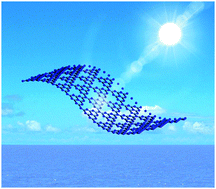Two-dimensional covalent carbon nitride nanosheets: synthesis, functionalization, and applications
Abstract
The development of new layered materials has experienced an evolution from graphene to metal oxide and metal chalcogenide nanosheets, and more recently to two-dimensional (2D) covalent organic frameworks, such as conjugated carbon nitride nanosheets (CNNs) with a spectral gap in the band structure. The anisotropic 2D geometric morphology, together with the aromatic π-conjugated framework, endows polymeric CNNs with unique properties, such as an enlarged surface area with a highly opened-up flat structure, reduced thickness with enhanced electron mobility and with intrinsic semiconductive features, which support their attractive bandgap- and surface-engineered applications ranging from energy-related topics to other new emerging fields. In this review, recent research advances in the establishment of two synthetic strategies for CNNs are firstly overviewed, namely, the top-down delamination of graphitic carbon nitride (CN) solids and the bottom-up assembly of molecular building blocks in a 2D manner. Efficient approaches aimed at advancing CNNs for target-specific applications, including hybridizing, doping, sensitization, copolymerization and nanorefinement, are also described as possible solutions.


 Please wait while we load your content...
Please wait while we load your content...